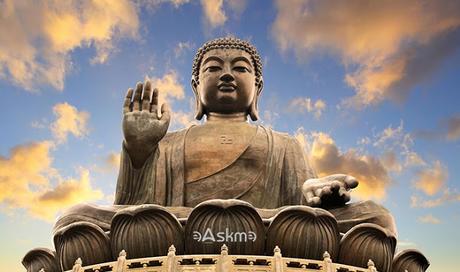Other people are at: Fighting Climate Change: Top Technologies for Digital Farming
In simple terms, auto-suggestion is self-hypnosis.
Note
In medicine, especially in psychiatric practice, there are often cases of self-hypnosis of a pathological nature, when the patient himself "invents" a disease for himself.
Currently, diseases such as bulimia and anorexia, depression, which are based on the mechanisms of self-hypnosis, are widespread.
Various manias and obsessions also most often develop as a result of suggestions, including those directed at oneself. At the same time, it is not surprising that diseases caused by self-hypnosis are best treated precisely through suggestive therapy.
Objectively speaking, self-hypnosis is a directed work of a person's own consciousness and imagination, as a result of which a person forms certain beliefs or makes a decision not under the influence of the external environment, but as a result of a subjective desire, an attitude towards a certain action.
Moreover, this kind of suggestion can occur in two ways:
So, for example, when a person inspires himself that his aching tooth, side or head have stopped hurting, this is an arbitrary auto-suggestion.
If you instilled in yourself a monstrous force and after blowing the fence off your foot, this is an arbitrary autosuggestion.
If you instilled in yourself an irresistible will and went to negotiations in order to instill your goals and ideas to your interlocutors or partners, this is an arbitrary suggestion.
But, if you, as the famous hero of Jerome K. Jerome, read a medical encyclopedia and find signs of all the diseases listed in it, then this will already be a manifestation of involuntary autosuggestion.
Involuntary self-hypnosis is associated with the formation of such an attitude towards oneself, in which one's own thoughts and actions are perceived as absolutely correct, are not subjected to criticism and doubts.
Also, involuntary auto-suggestion can be caused by a "thought" from the outside. But in this case, such a suggestion is called a suggestion.
How Does Self-Hypnosis Work?
However, we are primarily interested in autosuggestion as an effective method of self-government of the individual, or, more simply, a method of self-education and self-development.Before giving specific methods of self-hypnosis, let us explain how the mechanism of auto-suggestion works at the psycho-physiological level.
Prolonged repetition of self-hypnosis formulas has a long-term effect on certain parts of the human cerebral cortex, which, in turn, leads to a weakening of the reactions of other parts of the cortex.
General relaxation in this state is accompanied by the emergence of a dominant in the brain, the corresponding back reaction of which forms a certain reflex.
Autosuggestion techniques
There are autosuggestion techniques that involve a person's preliminary achievement of an altered state of consciousness.However, in most cases, simple muscle and mental relaxation is sufficient for effective self-hypnosis.
In this article, we will talk about:
1. Self-regulation
2. Meditation
3. Autogenic training
4. The school of conscious self-hypnosis by Emile Coue
5. Progressive muscle relaxation Jacobson
Self-regulation
One of the directions of auto-suggestion is self-regulation.Self-regulation as a method of auto-suggestion allows you to exercise control over physiological and psychological processes, which in the ordinary state of consciousness are carried out unconsciously, automatically.
So, this technique helps well to cope with painful sensations, to fight the manifestations of psychosomatic diseases, such as hypertension and tachycardia, headache or nervous tics.
Note
An example of self-regulation could be called the meditation "So-Ham" in yoga, during which a person focuses on breathing: the sound of the mantra "So" symbolizes inhalation, and "Ham" - exhalation.
Breathing control gives calmness and concentration, but long-term performance of this meditation is dangerous due to the possibility of reconfiguring the automatic breathing mechanism: having ceased to concentrate on inhalation and exhalation after a couple of hours of such meditation, a person can easily stop breathing altogether.
Self-regulation is often viewed in the context of self-education as well.
This is where motivation takes over. Using self-hypnosis, a person can give up bad habits and switch to a socially acceptable form of behavior, as well as achieve significant success in self-education.
However, given that the possibilities of self-regulation depend on the needs and motivation of a particular person, which are formed depending on the life experience of a particular person, individually acceptable ways of self-regulation can also differ significantly.
In other words, speaking about self-regulation in the sense of personal self-development, it should be borne in mind that different people understand different things by "development".
The next auto-suggestion method is meditation.
In principle, the technique of self-regulation differs little from the technique of auto-training, but its purpose is precisely to intervene in the mechanisms for controlling the activity of the nervous system and internal organs.
Therefore, wishing to actively influence their health through self-hypnosis, a person should first study the principles of the human body as a whole and its individual systems.
Meditation
- first you need to relax to such an extent that external stimuli do not interfere with concentration;
- then concentrate on the selected object, thinking about its properties;
- well, and then, to penetrate inside the object of meditation, uniting your own consciousness with the object of knowledge.
Note
The techniques of various meditations belong to the eastern practices of yoga and tantra, and are also widely described and applied by various esoteric schools of our time.
- specific, aimed at material objects;
- abstract, aimed at concepts and ideas.
Within the framework of this article, it will not be possible to broadly cover the entire range of techniques, united under the general name "meditation".
Our task now is to explain what it is and give working skills of practical meditation.
The essence of meditation is cognition through contemplation of objects, phenomena and ideas, using the method of maximum concentration on the selected object while simultaneously disconnecting from other sources of information, both external and internal.
Meditation takes place in three stages:
Pure meditations, as they are usually practiced by yogis, can be:
Classical meditation also implies the practice of " yama and niyama" - that is, the spiritual and physical cleansing that accompanies a righteous lifestyle.
In general, the practice of meditation is good for those who do not know how to concentrate on a specific problem, thought, or deed.
The ability to concentrate is inherent in every person, and by developing this ability through meditation, we can significantly increase our intellectual potential and use our time more effectively.
Many meditation lessons and practices can be found on the Internet, but they are not always freely available. In this case, the problem can be solved by using a VPN, which will help unblock site and not only.
Thanks to VPN you will be able to practice different types and techniques of meditation (such as transcendental, vipassana, walking meditation, qigong, etc) on any site together with experienced gurus.
One of the types of meditation is also prayer, and religious affiliation does not really matter.
The atheist, saying with a feeling of emotional uplift: "Let this happen," also prays.
True, prayer is understood here not as a word addressed to God, but as a state in which the praying person dwells, focusing on sacred texts, sounds, images - i.e. suggestion occurs.
Without entering into religious discussions, I note that the healing effect of the prayer word is often based precisely on the effect of autosuggestion.
- The first Schultz meditation involves sequential concentration on objects of different colors: snow-white mountain peaks, emerald fields, blue skies, etc.
- The second meditation boils down to visualizing color images (while you should see colors clearly).
- The third meditation of the highest level of auto-training requires focusing on a specific image (it is required to "revive" it in the imagination).
- Fourth - on an abstract idea (you need to keep concentration so that the thought is only about one thing, does not disappear and is not supplanted by other washes)
- The fifth Schultz meditation involves experiencing various emotional states (controlling the state caused by thought).
- The sixth meditation focuses on the image of a specific person.
Autogenic Training
The auto-training technique developed by Johann Schultz is effectively used to this day.
The highest level of auto-training involves the development of imagination, the ability to visualize and transform negative experiences.
The highest level of auto-training is based on the meditation technique (therefore, I am describing it only now, after you have understood the essence of meditative practice)
The seventh meditation is the highest level of autogenic training. It is also called the "response of the unconscious". Having mastered the ability to consciously evoke certain images in the subconscious, a person can interpret mental pictures that pop up in his subconscious during meditation.
Émile Coue's School of Conscious Self-hypnosis
Inspired by such experiences, Couet's students practiced self-hypnosis, the essence of which ultimately boils down to a single phrase recommended by a French pharmacist:The self-hypnosis technique proposed by the French pharmacist Emile Couet (1857-1926) is very effective. He called it "the school of self-control through conscious self-hypnosis."
The basis for the creation of the technique was the pharmacist's observation of the effect of drugs on some patients who, under the influence of self-hypnosis, observed therapeutic effects that were not expected by the prescription of the drug.
Couet's technique is based on his idea that any suggestion is based on self-hypnosis
Coue showed his students the unlimited possibilities of self-hypnosis, demonstrating that by instilling his own fall, a person can really fall.
"Every day, in all respects, I am getting better, better"
Coue believed that self-hypnosis can change the worldview of people in general. And, perhaps, he was right. Dr. Coue's technique was far ahead of its time.
Coue's ideas are traced in second generation hypnosis, modern third generation hypnosis.
Many methods and authors also take the Coue system as a basis.
- leading hand and forearm (right for right-handers, left for left-handers),
- non-dominant hand and forearm (left for right-handers, right for left-handers),
- right and left shoulder,
- muscles of the upper, middle and lower third of the face,
- muscles of the neck, chest and diaphragm,
- muscles of the abdomen and back,
- leading thigh, lower leg and foot,
- non-dominant thigh, lower leg and foot.
For example, Jose Silva subsequently used the Coue method in his "Silva method".
Edmund Jacobson's Progressive Muscle Relaxation
The progressive muscle relaxation technique proposed by Edmund Jacobson in the 1920s allows for self-hypnosis in a state of maximum relaxation.

This technique is as simple as it is fundamental. The main idea of Jacobson is that after a strong tension, the muscles automatically relax as much as possible, therefore, to relax all the muscles, it is necessary to consistently strain the muscles for 5-10 seconds, concentrating on the subsequent relaxation for 15-20 seconds.
Jacobson suggested about 200 exercises for all the main muscles of the body, but later it was decided that it was enough to concentrate on only 16 muscle groups for relaxation:
Jacobson advised to engage in muscle tension and relaxation exercises, first daily, and after two months, twice a week to maintain maximum performance and tone of the body.
Having achieved certain skills in the application of this technique, you can learn to inspire yourself with relaxation, imagining the corresponding sensations in the muscles, without preliminary tension.
Accordingly, self-hypnosis and the introduction of attitudes should be carried out at the time of complete relaxation.
To Sum Up
Without them, feedback and motivation for practicing self-hypnosis is lost, and, consequently, the result is removed and leveled.
Having a positive effect on a person engaged in self-hypnosis, thought can change for the better his environment and, ultimately, the world.
"If you want the world to change, become this change yourself.: Mahatma Gandhi, 1925."
If you still have any question, feel free to ask me via comments.
If you find this article interesting, don't forget to share it with your friends and family.
Why?
Because, Sharing is Caring!
Don't forget to like us FB and join the eAskme newsletter to stay tuned with us.
You May Also Like These;

